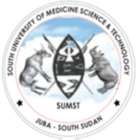A Rare Presentation of Echinococcosis
17 March, 2021 2023-12-05 23:42A Rare Presentation of Echinococcosis
Introduction: Echinococcosis, or hydatidosis, remains a significant public health concern in regions of endemicity, including South Sudan. While commonly affecting the liver and lungs, occurrences in the musculoskeletal system are rare. We present a compelling case of a 75-year-old female who sought medical attention with a painless mass on her back, ultimately diagnosed as a hydatid cyst.
Case Presentation: A 75-year-old female presented to Kapoeta State Hospital with a three-year history of a painless mass on her lower back, gradually evolving without associated trauma, pain, or fever. Physical examination revealed a soft, non-tender, and lobulated mass measuring 8cm x 5cm above the gluteal region with intact skin. Due to resource limitations, imaging investigations such as ultrasound, X-ray, or CT scan were unavailable. A provisional diagnosis of a lipoma was made.
Diagnosis and Treatment: During surgery, the unexpected discovery of a hydatid cyst led to its successful removal. Postoperatively, the patient was discharged with a prescription for oral albendazole (400mg) twice daily for 28 days, a standard protocol for echinococcosis treatment. Notably, the absence of post-operative complications was observed.
Discover the intriguing journey of a 75-year-old woman presenting a painless mass on her back, leading to an unexpected diagnosis of a hydatid cyst. In a region grappling with endemic echinococcosis, this case sheds light on the challenges of diagnosis in resource-limited settings and emphasizes the importance of health education in reducing the prevalence of this parasitic infection.
Follow-Up: Six months post-surgery, the patient showed no complaints or signs of recurrence, indicating a positive outcome.
Public Health Implications: In endemic areas, hydatid cysts should be considered in the differential diagnosis of any cystic swelling or lump. The lack of available imaging investigations highlights the challenges in resource-limited settings. Importantly, this case underscores the importance of incorporating health education into school curricula to raise awareness and contribute to the reduction of echinococcosis incidence.
Conclusion: This case report serves as a noteworthy example of a rare musculoskeletal presentation of echinococcosis in South Sudan. By sharing such experiences, we aim to contribute to the understanding, diagnosis, and management of parasitic infections in resource-constrained settings.
